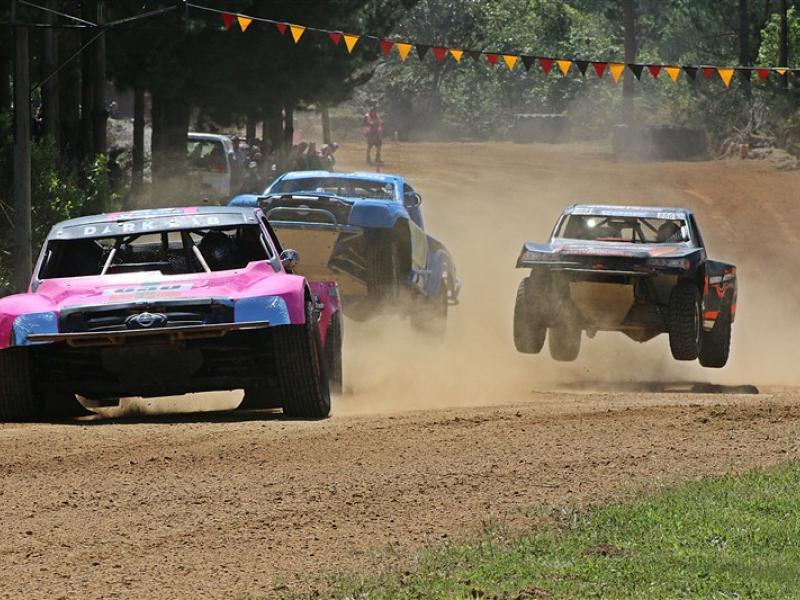|
Hoist failure could result in serious injury to the person or persons operating the equipment. Should an enquiry find an employer did not take all practicable steps to ensure the safety of the person involved in a hoist incident, the employer may face grave consequences. Jenny Baker reports Some players in the hoist industry believe official regulation of the industry is fragmented, and the industry is to a large extent self-regulated… but that not all workshop owners consider safety when working with hoists a priority. In New Zealand, the Health and Safety in Employment Act 1992 (HSE Act) governs and promotes safety in the workplace. It places a duty of care on all hoist industry role players to take all practicable steps to ensure that equipment used in the workplace present no risks to health or safety of workers or onlookers. Penalties exist for breaches of the Act. The Department of Labour (DoL) administers and enforces the HSE Act in most workplaces. The safety requirements and details for vehicle hoists are contained in two standards, according to spokespeople for DoL. They are AS/NZS 1418.9:1996, Cranes (including hoists and winches), Part 9, Vehicles Hoists - related to design and construction; and AS/NZS 2550.9: 1996, Cranes - Safe Use, Part 9: Vehicle Hoists - related to safe operation, maintenance, inspection and repair. The spokespeople say AS/NZS 1418.9 was also listed as a reference in Appendix 2 of the DoL’s publication "Guidelines For Guarding Principles and General Safety For Machinery”. This document is on the Department’s website and the Standards can be obtained from Standards New Zealand. The spokespeople say DoL employs trained and warranted DoL Inspectors in 14 regional offices who work towards safety in the work place through providing information and education, checking compliance, and using a variety of enforcement tools available to ensure compliance. They say the DoL works closely with industry to achieve its health and safety objectives, develops and publishes various material including Codes of Practice, Best Practice Guides, and other information, and encourages industry organisations and unions to develop their own specialist material to drive safety in their sectors. Should an inspector find, during pro-active campaigns or after an accident, that the responsible person did not take all practicable steps to achieve a safe workplace, and that this is a serious breach of the Act with significant consequences, they may prosecute the offender. This is usually the workshop owner, who may then be liable for a fine up to $250,000. Should the inspector find the offender had knowledge beforehand that what they were doing was reasonably likely to cause someone else serious harm, the maximum fine is $500,000 and the offender may be sent to prison for up to two years. An example is where a second offence that results in serious harm is identical to an earlier offence. Serious harm includes injuries that cause death or severe or long-term damage to health. Across the ditch, ACT WorkCover in early 2006 announced that a safety audit by its inspectors on the operation of two and four post vehicle hoists in 70 mechanical workshops in Canberra found “the majority of businesses operating vehicle hoists … to be in breach of safety regulations”. The audit revealed serious safety issues, including a lack of safety locks to prevent the rapid descent of hoists during unexpected failure, a lack of locking mechanisms on vehicle supporting arms, missing or damaged wheel stops on four-post hoists to prevent vehicles rolling off, and lack of safety guarding. It also revealed inadequacies in keeping maintenance records, a lack of operating instructions and manuals and safe workloads not being properly identified. The audit followed a number of vehicle hoist failures. At the time, ACT WorkCover was investigating an incident involving a two-post vehicle hoist that fell over while a vehicle was being lifted, with the fall only being arrested by the webbing of the roof truss. ACT WorkCover personnel inspected 159 vehicle hoists and issued 328 safety notices and compliance agreements to 66 businesses operating vehicle hoists. The majority notices were Improvement Notices directly relating to vehicle hoist safety. ACT WorkCover Inspectors subsequently returned to those workshops where safety notices were issued to ensure that remedial action has been taken to deal with the safety breaches. Apart from addressing the safety issues employers had a responsibility to inform any person affected by the notice or compliance agreement, and prominently display a copy of the document until it was no longer in force. Act WorkCover also issues a publication called Hazard Alert. Following a fatality involving the operation of a two-post vehicle hoist in 2002, Act WorkCover published an issue with the specific objective to inform workers in the motor vehicle service industry of the risk of serious injury and even death when working with poorly maintained vehicle hoists. The publication listed several measures to prevent accidents and injuries. In the first instance, hoists must be regularly inspected and maintained, by a competent person, to ensure it remains in safe working order. AS/NZS 2550.9 provides details of a typical logbook format suitable for recording this information. Secondly, hoists with any safety devices in a poor state of repair, or removed, must be tagged ‘out of service’ and not operated until the safety devices are repaired or renewed and refitted. Thirdly, employees must be provided with adequate and appropriate information, instruction, training and supervision necessary for the safe operation of the hoist. Also, employees must ensure the equipment is used in accordance with any instructions given by their employer, consistent with its safe and proper use. The “competent person” repairing the hoist must be a person who has acquired through training, qualification, experience or a combination of these, the knowledge and skill enabling that person to correctly perform the required task. The DoL spokespeople did not give MEN statistics for hoist accidents, did not know of a New Zealand audit or publication similar to the Australian referred to earlier, declined further comment, and opted not to put us in direct telephone contact with a departmental line officer or senior manager. ACC did not reply to MEN’s enquiries. The Hazard Alert recommendations make sense anywhere in the world …but do all in the New Zealand hoist industry follow them? Carl Treweck, owner of Auckland Hoist Services, has been working as hoist repair and maintenance specialist the past eight years. A qualified fitter and turner, he says he knows of a number of “close calls” with hoist incidents: “It’s only a matter of time before there’s a very serious accident.” Treweck says lack of maintenance plays a major part in costly hoist repairs and failures he has seen: “Not everybody likes to spend money on regular hoist maintenance and then it fails.” He says it is crucial to service hoists every six months to a year, depending on the type of hoist. “People should realise it’s rather like a WOF, that the serviced and certified hoist is only certified that it was in a safe working condition at the time of the service. The operator must therefore give the hoist a visual inspection before using it, and check that, when loading a vehicle on the hoist, it is done correctly. But they often take all this for granted, and that’s how accidents happen. |
“I’ve seen cars that fell off hoists and had to be written off. And 99% of the time it’s because they were incorrectly loaded.” Treweck reckons the hoist industry in New Zealand is mostly self-regulated, but that unfortunately not all operators are ethical. He believes this can be remedied by more consistent enforcement of the regulations by inspectors trained specifically in hoist work, and by regulating companies that do service and repair work. Sulco Limited Business Unit Manager Equipment Division, Rob Gosling, agrees New Zealand’s standards and regulations governing safety in workshops are ambiguous and that some in the industry consequently cut corners with product quality, operator training, and maintenance issues. The Auckland company provides a range of hoists for passenger vehicles, SUVs, trucks and buses and is one of the largest suppliers in New Zealand for this specific industry. “Regulation regarding the operation of such equipment by the authority could be described perhaps as ‘open to interpretation’ in some areas, it is however often harsh with regard to penalty following incident or injury,” he says. In addition, he sees training of operators as a problem. This, he says, is due largely to scrapping the national apprenticeship programs and the cutting of many formal training programmes, with the result that a number of basic skills and practices are no longer taught. “But thankfully the industry and a few key people from sectors within have seen this develop over time and perhaps through frustration, now run a number of formal training programs to meet rising demand for the basic workshop operation skills,” he says. Changing vehicle specifications also offer a number of new challenges to operators of equipment. Gosling says it appears vehicle manufacturers are producing a wider range of vehicles at opposite ends of the spectrum: “I recently came across a vehicle that, although longer and heavier than the previous model, presents narrower jacking points that pose a change of loading and weight distribution on the lift equipment. “This is potentially hazardous if we continue with previous methods. I think the service agent needs to review, rethink new models as they enter the workshop for the first time,” he says. He says it is clear providing a safe working environment for staff and customers is the obligation of the workshop owner and management. “But we at Sulco believe the equipment supplier also has an obligation to provide training for safe operation of the new gear. “Sulco provides the nominated person with training at time of delivery or installation of new workshop equipment. This person has to sign off at completion of the training that they know how to use the gear. Ideally, the nominated person then passes this knowledge on to the rest of the team. “It’s also important that the workshop owner or management give new staff induction training, notably when trained staff leave, and offer regular refresher training to existing staff,” he says. William Singleton, General Manager for Auckland-based STOCKS Equipment says buying a new hoist should not just come down to cost. “Performance, quality, long term reliability and service support are just as important, especially considering as the hoist gets older it requires more attention to keep it safe and in good working order. “There’s no denying that you can buy hoists at pretty low prices these days, but you have to look beyond the upfront purchase – so it pays to look at the proven performers.” He says it is also important for the supplier to have good back-up support to ensure prompt and professional service when required - the STOCKS service and maintenance team consequently undergo training at the factories of all the major brands the company represents. STOCKS offer hoists in economy to higher price classes. High end of the market products include a range of models by CE-approved STENHOJ of Denmark and Ravaglioli of Italy, both approved by leading vehicle manufacturers and particularly popular with the local national franchise workshops of European auto makers. “It comes down to the old saying…you get what you pay for,” he says.
|





